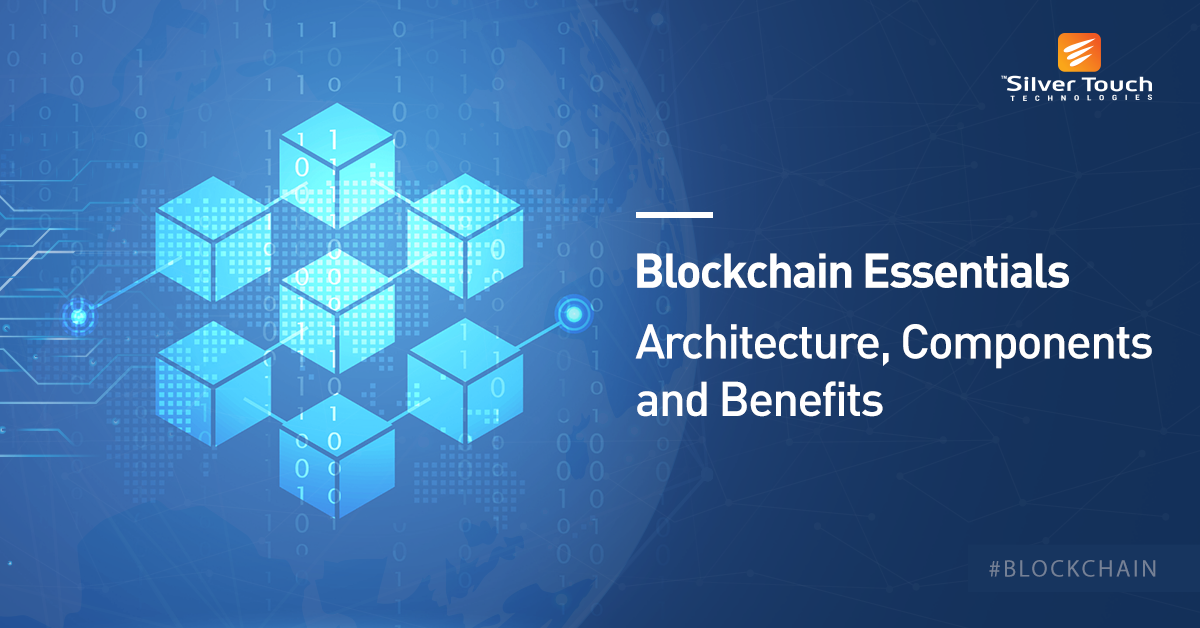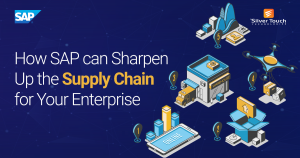Blockchain name itself seems to be very complex, so its architecture. You must have always thought that it will be very difficult to understand the process and architecture of blockchain, didn’t you? If yes, then be relaxed, we have tried to explain blockchain in a very simple language in this article. This article will explain you various components of blockchain very effortlessly.
First of all, let’s go back and see when and how blockchain was introduced. The term blockchain was first introduced back in the year 1991. A small group of researchers wanted to develop a tool to timestamp digital documents so that they could not be changed at later stage. Further to this, the technique was accommodated and reinvented by Satoshi Nakamoto. In the year 2008, Nakamoto created the first crypto currency. This blockchain project was named Bitcoin, a very well known term now a day.
Let’s understand key aspects of blockchain to understand how it works. This may inspire you to think about blockchain and building your first blockchain solution.
What is Blockchain & Its Architecture?
First of all let’s understand what is blockchain technology? Let’s make it little simpler. Logically thinking, blockchain is a chain of blocks which contain specific information (database). This information is kept in a secure and genuine way that is grouped in a network (peer-to-peer). In other words we can say blockchain is a combination of computers which are linked to each other rather than linked with a central server. This means it is a decentralized network. Below image will give you more clarity on different type of networks.
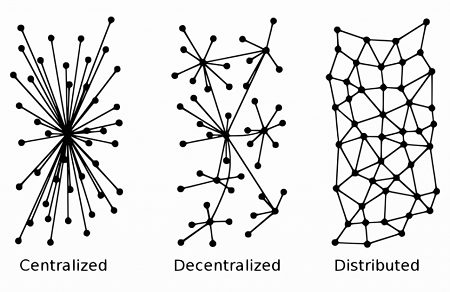
In more simple words, we can compare blockchain with Google Docs which is widely used these days. You might recall those days where we pass documents to each other so that each participant can make changes one by one and all other participants want for their turn. Now, with the help of Google Docs, we don’t have to wait anymore, we all can work on a same document simultaneously.
As blockchain gives facility to distribute digital information and not copied, it provides more transparency, data security and trust to the people.
Financial industry is the major user of blockchain. Nevertheless, blockchain is these days widely used for crypto currency, ERP, supply chain, data sharing, digital voting, copyright, real estate etc.
Difference between Database and Blockchain Architecture
In traditional architecture, we use client-server network where all required information is being stored in the central server so that data can be managed easily with limited and controlled number of administrators.
Now in case of blockchain where distributed network is used, different participants but within the same network maintains information. Entire system is controlled by every individual within the blockchain network. Everybody ensures that all records are in order results in data security and validity.
Thus we can say that blockchain is a decentralized ledger in P2P network. In other words we can also say it is a public or private distributed ledger of different types of transactions. Though it is a network of many individual computers, data can’t be changed or altered without the consensus of the entire network.
 Client Server
Client Server P2P
P2PEnterprises or Organizations can expect below things from blockchain while they plan to implement blockchain.
- Reduce Cost: As blockchain is having distributed architecture it can save lots of money which is being spent on the centralized database for its security against cyber crime and corrupt intentions.
- Historical Data: It is very much possible to check historical transactions as and when required within blockchain architecture. Whereas it is not possible in centralized database where it gives information as snapshot for the specific point of time only.
- Secure Data: It is very hard rather impossible to alter data once it is entered into blockchain network due to its tamper proof architecture. It takes more time to process any record but on other hand it gives guarantee of high data security as well as validity.
Types of Different Blockchain Architectures
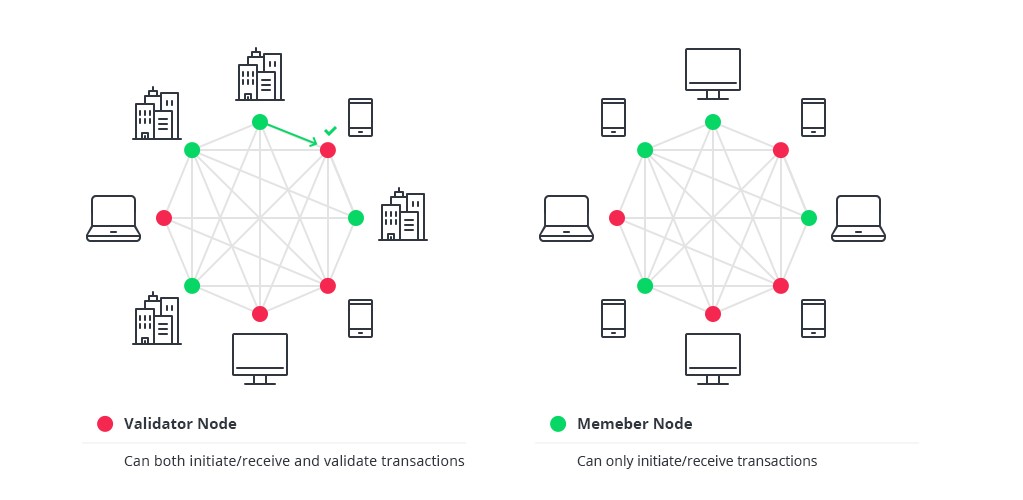
All blockchain architecture comes under below three categories:
In Public Blockchain Architecture data and access to the system is available to anyone who wants to participate. | Private Blockchain is just opposite to Public Blockchain. In private blockchain it is accessed and controlled by the restricted users who are invited or form a specific organization. | Consortium blockchain architecture may consist of more than one organization. In this architecture it is controlled by the primary user. |
The following table gives in-depth comparison of above three blockchain architecture:
Consensus determination | All miners | Within one organization | Selected set of nodes |
Read permission | Public | Public or restricted | Public or restricted |
Immutability level | Almost impossible to tamper | Could be tampered | Could be tampered |
Efficiency (use of resources) | Low | High | High |
Centralization | No | Yes | Partial |
Consensus process | Permission less | Needs permission | Needs permission |
How Core Components of Blockchain Architecture Works?
Below are the core components of blockchain architecture:
- Node: Computer or user of the blockchain architecture.
- Transaction: Transaction is the smallest building block in the blockchain.
- Block: A data structure that is used to keep set of transactions which is further distributed to all the nodes in the blockchain network.
- Chain: Chain is a sequence of blocks in specific order.
- Miners: Miners are the specific nodes which perform block verification process before anything is added to the blockchain structure.
- Consensus: A set of rules and arrangements that carry out blockchain operations.
From below diagram you will get more clarity on how blockchain actually works.
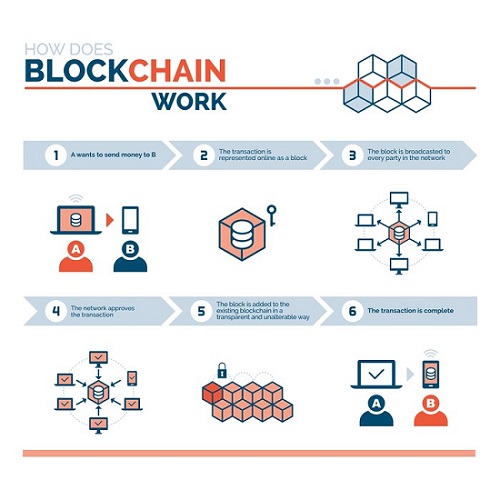
Key Inherit Features of Blockchain Architecture
Blockchain architecture owns lot of benefits for organizations. Here are several embedded features:
Conclusion
Let’s now summarize what we have discussed in this article. Blockchain technology has a vast scope and can be a great solution for business, legal as well as technical perspective. With the help of mutually agreed member, business can run their daily operation easily. As far as legal is concern, connection can be made between multiple involved parties only and any intermediaries can be excluded from the blockchain network. Simultaneously for technical aspects, blockchain gives assurance of total control, enhanced security and complete privacy of data resides inside the network.
Due to secure and transparent mechanism, blockchain will definitely make revolutionary change in the way people currently do their transactions and deal with each other. The future of blockchain solution looks to be very bright in near future. Blockchain is having a great prospect in government sector, stock market, healthcare industry, insurance companies, energy sector and real estate business.

